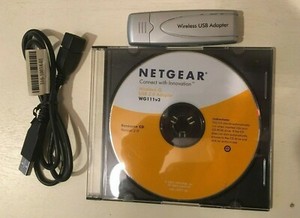

- #LINUX MINT DRIVER FOR NETGEAR WNDA3100 HOW TO#
- #LINUX MINT DRIVER FOR NETGEAR WNDA3100 UPDATE#
- #LINUX MINT DRIVER FOR NETGEAR WNDA3100 FULL#
- #LINUX MINT DRIVER FOR NETGEAR WNDA3100 WINDOWS 10#
it was plug-and-play with Windows 10, didn't need to download anything.
#LINUX MINT DRIVER FOR NETGEAR WNDA3100 FULL#
this dongle has no trouble connecting to my wireless with full signal strength (4 bars!). I sit in an alcove of sorts, surrounded on 3 sides by walls, with the router a good 30+ feet away, through several other walls. all of a sudden NONE of them exist? when I read to try USB wireless adapter and bypass my computer's internal wireless altogether I thought, sounds simple enough for me! I saw so many good reviews on this one by Panda Wireless, it's not too big, but has good range. after checking on Dell's site and googling reviews I found this common problem- none of the Dell suggested fixes, resetting my router or "troubleshooting" the wireless seemed to help, it would completely lose my "Favorite" network as well as the 5 or so neighboring networks I always used to "see".

Saved functionality on my new Dell Inspiron 2-in-1 laptop, which apparently has a faulty/finicky wireless adapter. These have been awesome for like 10 days now, without a single issue on both computers. I got them on same day shipping, put them in, turned on the computer, and voila! Internet connection. It had very good feedbacks and said it was plug and play, so I figured I would give it a shot even though I had not heard of this brand before. I was worried about the same type issues happening again, but for seventeen bucks each was worth a try. I checked out a bunch of ones here on Amazon, and decided to go with this Panda Wireless PAU05. I finally decided to return them and search for something else. I tried all the install, reinstall, driver updating from manufacturer and Windows, disabling certain settings, etc. I had to keep resetting the router, which did not have issues until adding the adapters. It actually kept shutting down our whole network with 2 iPads, laptop, and the tv, whoever was on it. However, after restarting the computer it would not connect to the internet. They were installed as instructed with the provided CD. So I originally purchased 2 Netgear AC600 mini adapters for forty bucks each, which were also supposedly backwards compatible with N routers. So I thought it would be best to get one at a midrange price and well known brand just in case of problems. After researching different wifi adapters online, it appeared that a lot of them had issues with Windows 10. So we were in need of wifi adapters to connect at home without having to string cables everywhere. They both had ethernet only as an internet connection, no onboard wifi.
#LINUX MINT DRIVER FOR NETGEAR WNDA3100 WINDOWS 10#
We recently brought home 2 Lenovo work computers that are 2 years old, both were upgraded to Windows 10 from Windows 8.
#LINUX MINT DRIVER FOR NETGEAR WNDA3100 UPDATE#
UPDATE : Still working well with continuous use under Raspbian.

I will continue to run it and see if it holds up.

Comparing the two, I find the PAU05 gets a better signal, I guess because it's bigger. UPDATE : I talked with Panda support about the heat concern and they mailed a replacement out (PAU03 150Mbps version at my request), no charge. This makes me wonder if it will fail prematurely, and I'll update here if it does. It does not work with my other RPi2 running OSMC, but there's probably a way to fix that.įinally I noticed the USB connector gets very hot to the touch am guessing at least the advertised maximum operating temperature of 50C (122F).
#LINUX MINT DRIVER FOR NETGEAR WNDA3100 HOW TO#
This is of dubious value if, like most of us, you live in a place where there are many wi-fi routers competing for channels in the crowded 2.4 GHz spectrum, and aside from that it's not always clear how to get channel bonding working (it doesn't seem to be happening for me and I have no idea what to do about it).Īnyway it's working fine in single channel mode out of the box with Raspbian Jessie on a Raspberry Pi 2. You get the faster speeds with "channel bonding", i.e. This is a single (2.4 GHz) band device with two radios, supporting the 300 Mbps claim and accounting for its larger size.


 0 kommentar(er)
0 kommentar(er)
